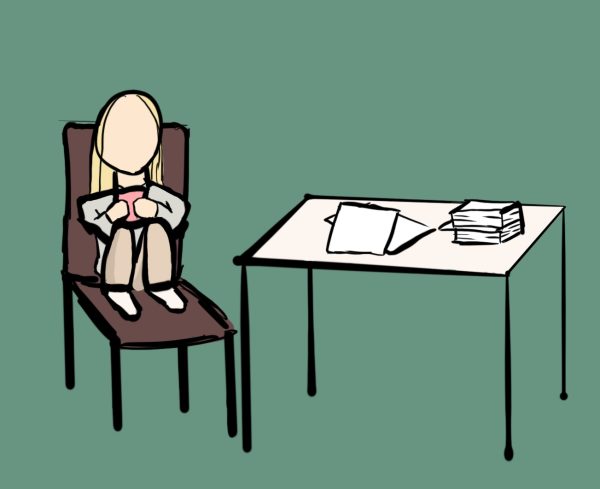Where did all the happy kids go?
The issue of mental health for adolescents—especially those aged 15 to 19—has been a growing concern for years, especially since the early 2010s when suicide rates rose and surpassed homicide as the second-leading cause of death among American teenagers, according to a 2016 report from PRB. More recently, John Elflein—a research expert for Statista specialized in health—found that in 2019, around 32 percent of adolescents ranging from ages 12 to 17 who were receiving treatment for mental illness were doing so because they were considering or had already attempted suicide.
There is no word to describe these statistics better other than alarming. It is alarming that America’s youth has been driven to this point, and it is alarming that it does not seem to be getting any better.
While mental health is a seemingly personal issue meant to be dealt with individually, we as a society have reached a point where we have to ask what factors in our world cause or worsen adolescents’ struggle with mental health.
The causes of depression and mental illness are complex. Scientifically speaking, mental illness boils down to a chemical imbalance in the brain. According to Southside Medical Center, the brain relies on neurotransmitters to function correctly, and when “too much or too little of one or more chemicals” is present for extended periods, this affects a person’s mental health and leads to conditions such as chronic depression. However, this is not the only source of poor mental health; outside factors can worsen it.
With the technological advancements made in the past two decades, it is easy to blame smartphones, tablets and other such devices for the worsening mental health of teenagers. An article by Medical News Today states that with the integration of technology into everyday life, children who overuse technology are more susceptible to adopting an addiction to technology, delays in social and emotional development, and the development of social issues such as social incompatibility and anxiety. In addition, the rise of social media led to the increase of cyberbullying—a new form of bullying that is harder to control and detrimental to a teenager.
The 2019 Youth Risk Behavior Surveillance System—a branch of the CDC—reported that an estimated 15.7 percent of high school students were bullied online in the 12 months before the survey.
Now that we’ve established that technology can negatively impact mental health, what can we do about it? Technology restriction is typically a matter dealt with within each family. On a national level, the amount of time a teenager spends on their phone is the least of the country’s worries.
We can ask ourselves here why teenagers are constantly turning to their phones, even when the risks of technology abuse are boldly highlighted with a bright yellow marker by every parent, teacher, and child expert in the country.
In an article for Intelligencer entitled “Why Are Kids So Sad?” Malcolm Harris writes that loss of autonomy catalyzes unhappiness among teenagers in the 2020s. His 2017 book Kids These Days: Human Capital and the Making of Millenials explores how modern teenagers, regardless of race, gender, or economic class, are “spending less time doing things that make them and more time doing things that make them especially unhappy (like homework and listening to lectures.).”
When putting it into perspective, this claim makes sense. Although the book was published before the COVID-19 pandemic, 2020 proved to be the perfect example of the loss of autonomy for teenagers. Strict regulations were put into place to limit human contact. Although it was done for the safety of others, it still deprived adolescents of the physical and social interactions needed for this crucial development period.
The stay-at-home order that kept the country inside also isolated teenagers from their social lives, giving them limited options for how they should spend their time. This led to them relying on their smartphones as, in Harris’s words, “hyper-efficient daydreaming machines.”
But what does that mean?
When the world they know seems to be slipping further and further away from reality, teenagers turn to technology as an escape. By immersing themselves online, teenagers enter a world where COVID cannot touch them, where their friends are just one click away and where they can curate precisely what aspects of the world they want to see and filter out the rest.
Even without the pandemic, teenagers live in a homework-heavy era, dedicating more time to a school than any generation.
“The Cult of Homework,” an article by Joe Pinsker for The Atlantic, states that 21st-century teens spend twice the amount of time on homework compared to teenagers in the 1990s.
The combination of the lack of autonomy over their own time and the growing culture of technology usage is contributing to the youth mental health crisis in America. Teenagers feel as if they don’t have any control over their lives, which pushes them toward the screen, where they feel a sense of empowerment and comfort.
The first step to fighting the mental health crisis is acknowledging its roots. From there, it is a collaborative effort of society to find solutions that combat the problem right at its source.
Your donation will support the student journalists of Saint Viator High School. Your contribution will allow us to purchase equipment and cover our annual website hosting costs.








